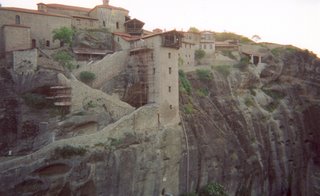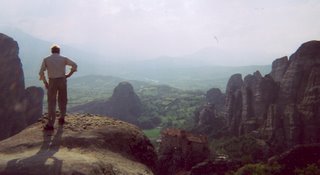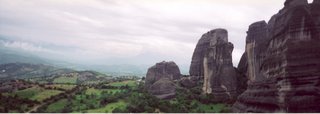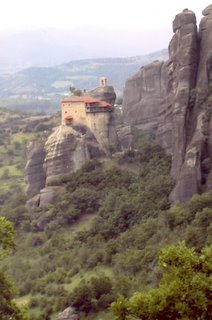 Parthenon, Athens, Greece
Parthenon, Athens, GreeceI. Most photos that show the Parthenon will focus on its antiquity and leave out its environment, its present context. What is the Acropolis, the rock on which the Parthenon, Temple of Athena, patron goddess of Athens rises.
Update 2014: Explore the meaning of the Parthenon's frieze. Read The Parthenon Enigma, Joan Breton Connelly, review by Caroline Alexander in the NYT at http://www.nytimes.com/2014/01/26/books/review/the-parthenon-enigma-by-joan-breton-connelly.html?_r=0/
- Do the figures depict a religious procession, where a dedicated robe is offered to the goddess. But there are inconsistencies. Is it instead a depiction of a sacrifice of a child, not merely a child handing over a robe. Or is it not a continuous story at all, but separate subjects.
And what is the shortened story of Athena that comes to us? What more is to learn, see Parthenon, Athena, Athene Partheneia
II. The Surround
Look further to the rooftops below. There are real neighborhoods surrounding. The markets. The Plaka. Who is there? Archeology can tell us that there was indeed crowding and disease in Athens then, as we have now, see http://www.archaeology.org/online/news/kerameikos. Enjoy the Parthenon in a fuller setting here: the warren of the market, the housing, rooftops, awnings against the sun, real people living nearby.
Should we have cropped out the neighborhoods, to focus on the Parthenon? Crop the picture, crop the narrative, exclude important evidence, reduce how people think, create and send a new agenda. All becomes marketing.
III. Ambiguity of the Frieze. The Elusive Past; the persistent sales job for agenda du jour
Are the ancient Greek battles like Serbia's battle of Kosovo Plain, 1389. Do interpretation and drive for an ideology create new facts where before they were not clear at all. Who really won at Kosovo Plain? Who did the epics say won, and why? Later interpretation and need for myth, filling in where the facts are not at all clear. See Europe Road Ways Themes, Kosovo I and Kosovo II.
It is the tellers of tales who dominate any time facts are concealed or cannot be accessed. Politics?
 Nafplio, Peloponnese, Greece
Nafplio, Peloponnese, Greece Meteora, Monastery, Greece
Meteora, Monastery, Greece Meteora view, Monasteries, Greece
Meteora view, Monasteries, Greece Meteora, Creece. Conglomerate rock formations, and medieval monasteries
Meteora, Creece. Conglomerate rock formations, and medieval monasteries  Rock formations, monastery at summit, Meteora, Greece
Rock formations, monastery at summit, Meteora, Greece Clifftop monastery, Meteora, Greece
Clifftop monastery, Meteora, Greece Olympus, view. Greece
Olympus, view. Greece Ionnanina, monastery, Greece
Ionnanina, monastery, Greece Metsovo, village, Greece
Metsovo, village, Greece Acropolis, Greece
Acropolis, Greece Evezone Guard, Syntagma Square, Athens, Greece
Evezone Guard, Syntagma Square, Athens, Greece Parthenon, Acropolis, Greece
Parthenon, Acropolis, Greece